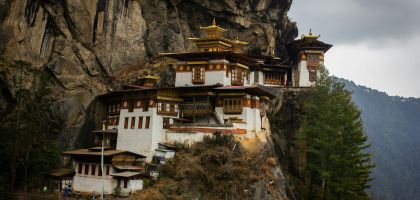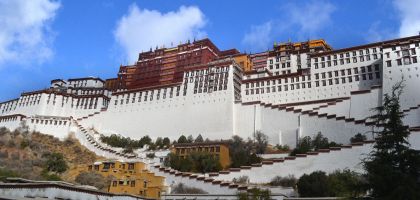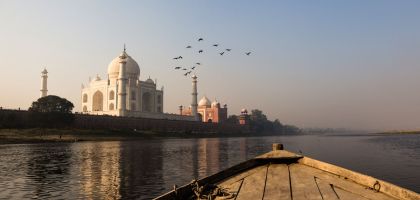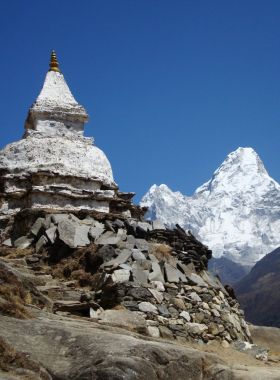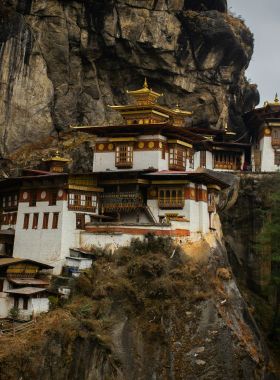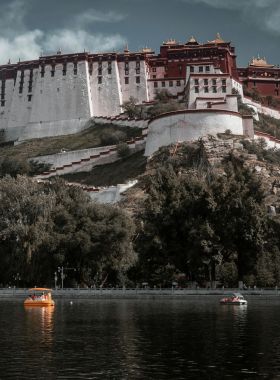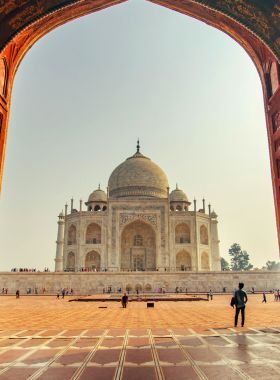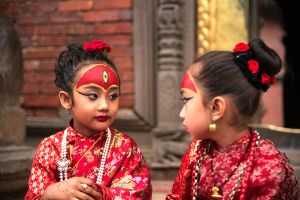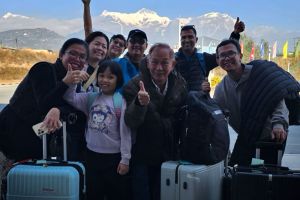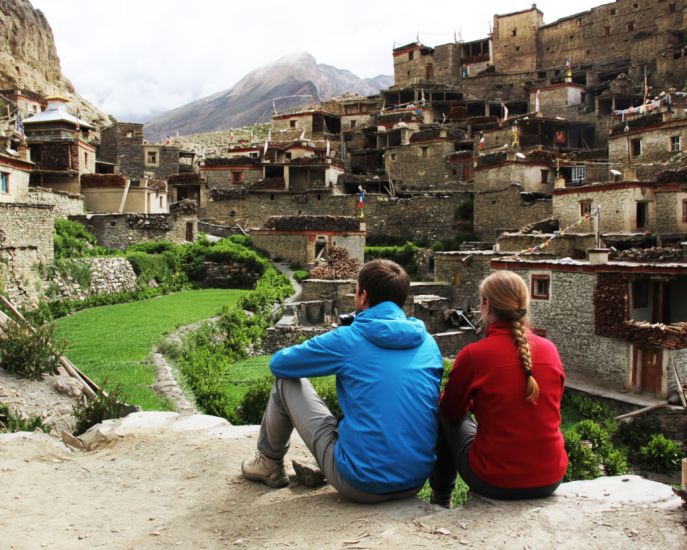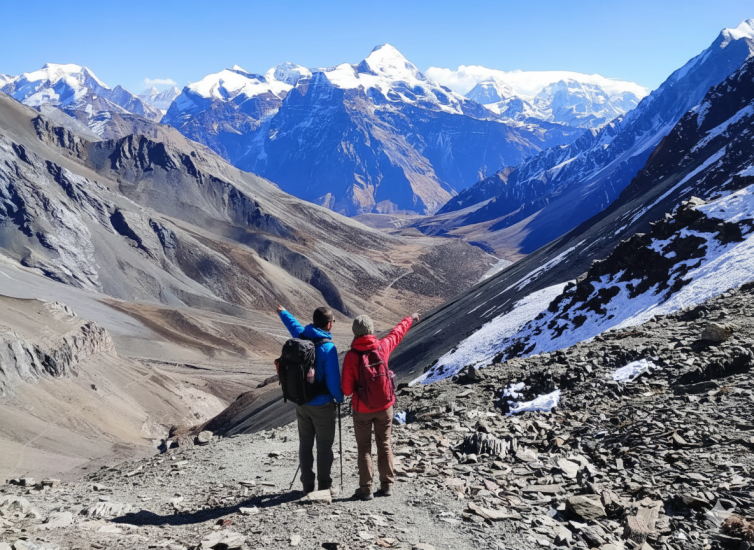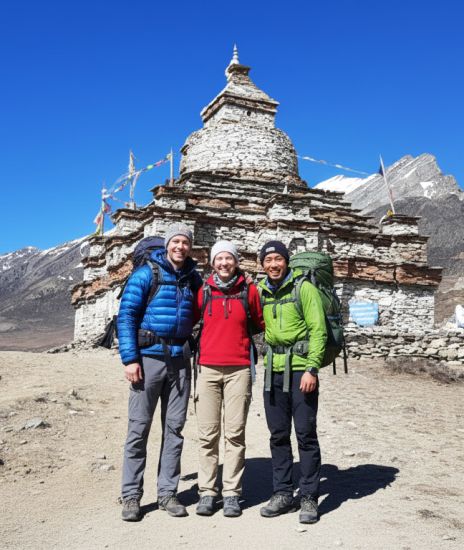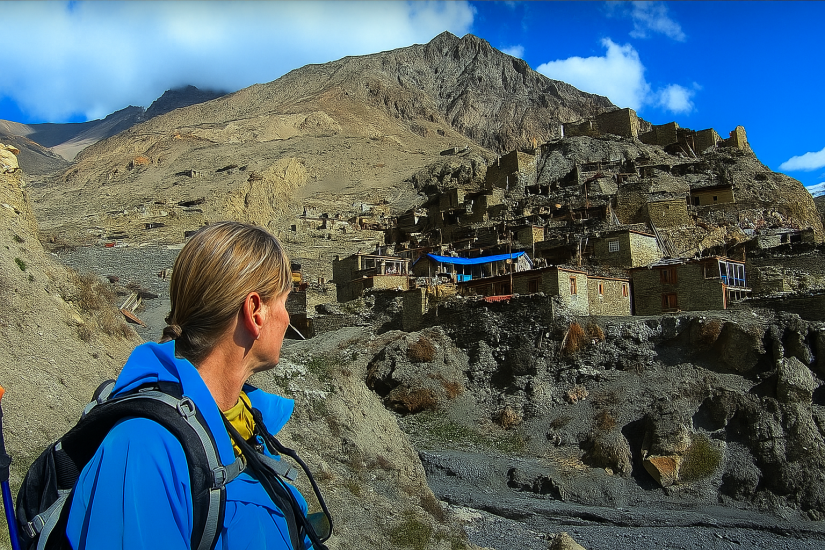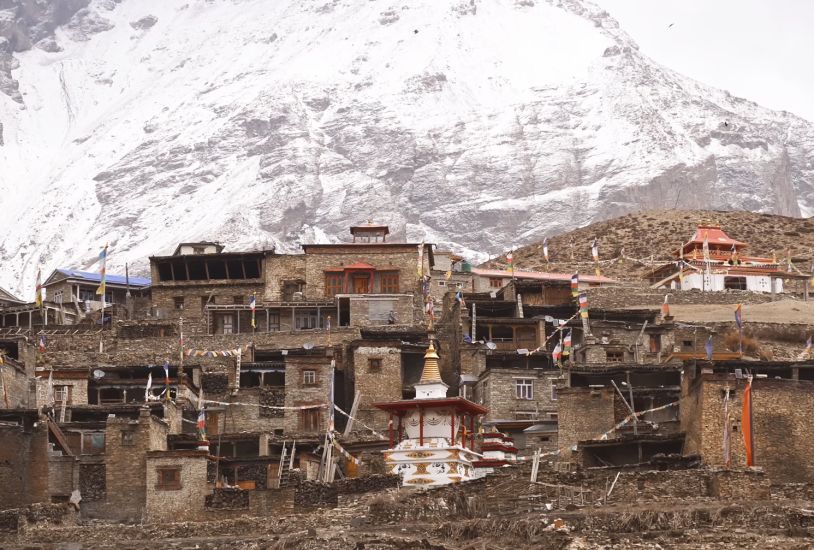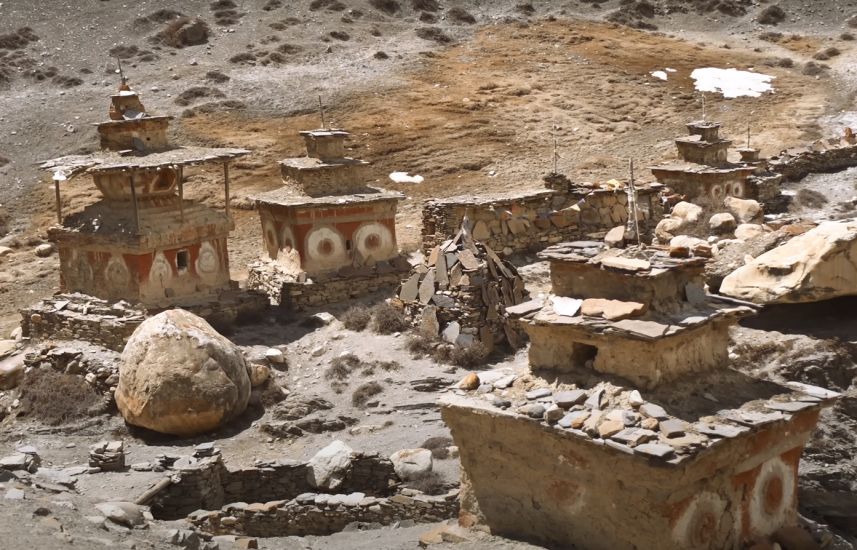Nar Phu Trek
13 Days / Nepal
Activity
Difficulty Level
Destinations
Trip Start / End
Max Altitude
Accommodation
Travel Style
Best time to travel
Personalized Travel Advice

Dev Raj Nepal
+977 9851096523
Detailed Itinerary
01
DAY
01
Upon arrival in Kathmandu, you will be warmly welcomed at the airport and transferred to your hotel in the heart of Nepal’s bustling capital. Take a moment to soak in the sights, sounds, and scents of this vibrant city as you settle in. The rest of the day is yours to relax, recover from your journey, and acclimatize to the altitude. Whether you choose to unwind in your room or step out for a gentle stroll through nearby streets, the energy of Kathmandu offers a perfect introduction to the Nar Phu adventure ahead. By evening, you can savor the anticipation of your upcoming trek, surrounded by the rich culture and history that define Nepal.
Arrival Kathmandu
Upon arrival in Kathmandu, you will be warmly welcomed at the airport and transferred to your hotel in the heart of Nepal’s bustling capital. Take a moment to soak in the sights, sounds, and scents of this vibrant city as you settle in. The rest of the day is yours to relax, recover from your journey, and acclimatize to the altitude. Whether you choose to unwind in your room or step out for a gentle stroll through nearby streets, the energy of Kathmandu offers a perfect introduction to the Nar Phu adventure ahead. By evening, you can savor the anticipation of your upcoming trek, surrounded by the rich culture and history that define Nepal.
02
DAY
02
You will begin your Kathmandu sightseeing with a visit to Pashupatinath Temple, one of Nepal’s most sacred Hindu temples, where the spiritual energy of centuries of devotion is palpable. Next, explore Boudhanath Stupa, one of the largest stupas in the world and a vital pilgrimage site for Tibetan Buddhists, where colorful prayer flags flutter against the Himalayan sky.
After lunch, visit the fascinating Swayambhunath Stupa on the top of a hill in Kathmandu. This is also known as the “Monkey Temple” and is a 2000 year old Buddhist temple. From the top, there are absolutely amazing views of the Kathmandu city below. You can walk around the temple compounds and seek blessings.
After soaking in the spiritual and cultural highlights of Kathmandu, you will return to your hotel, where a detailed briefing about the Nar Phu Trek awaits. Here, you will receive essential information about the route, trekking preparations, and what to expect on this off-the-beaten-path Himalayan adventure, setting the tone for the extraordinary journey ahead.
Kathmandu Exploration & Trek Preparation
You will begin your Kathmandu sightseeing with a visit to Pashupatinath Temple, one of Nepal’s most sacred Hindu temples, where the spiritual energy of centuries of devotion is palpable. Next, explore Boudhanath Stupa, one of the largest stupas in the world and a vital pilgrimage site for Tibetan Buddhists, where colorful prayer flags flutter against the Himalayan sky.
After lunch, visit the fascinating Swayambhunath Stupa on the top of a hill in Kathmandu. This is also known as the “Monkey Temple” and is a 2000 year old Buddhist temple. From the top, there are absolutely amazing views of the Kathmandu city below. You can walk around the temple compounds and seek blessings.
After soaking in the spiritual and cultural highlights of Kathmandu, you will return to your hotel, where a detailed briefing about the Nar Phu Trek awaits. Here, you will receive essential information about the route, trekking preparations, and what to expect on this off-the-beaten-path Himalayan adventure, setting the tone for the extraordinary journey ahead.
03
DAY
03
Leaving the bustle of Kathmandu behind, the road winds through fertile valleys and terraced hillsides where farmers tend to emerald rice paddies and small villages cluster around ancient banyan trees. As the journey unfolds, the scenery shifts from subtropical greenery to rugged river gorges, with the Marsyangdi River rushing alongside much of the way.
Beyond Besisahar, the road grows wilder, sometimes paved, often rough and bumpy, cut dramatically into cliffs that tower above cascading waterfalls. The jeep rumbles past remote hamlets, suspension bridges strung across deep ravines, and forests of pine and rhododendron, with snow-dusted peaks gradually piercing the horizon. By the time you arrive in Koto, the air is crisp, prayer flags flutter in the wind, and the sense of adventure deepens—this small mountain village marks the true gateway into the hidden Nar Phu Valley.
Kathmandu -Besishahar – Koto
Leaving the bustle of Kathmandu behind, the road winds through fertile valleys and terraced hillsides where farmers tend to emerald rice paddies and small villages cluster around ancient banyan trees. As the journey unfolds, the scenery shifts from subtropical greenery to rugged river gorges, with the Marsyangdi River rushing alongside much of the way.
Beyond Besisahar, the road grows wilder, sometimes paved, often rough and bumpy, cut dramatically into cliffs that tower above cascading waterfalls. The jeep rumbles past remote hamlets, suspension bridges strung across deep ravines, and forests of pine and rhododendron, with snow-dusted peaks gradually piercing the horizon. By the time you arrive in Koto, the air is crisp, prayer flags flutter in the wind, and the sense of adventure deepens—this small mountain village marks the true gateway into the hidden Nar Phu Valley.
04
DAY
04
From Koto, the path leaves behind the main Annapurna Circuit and ventures into the restricted Nar Phu Valley of Nepal. A suspension bridge stretches high above the roaring Marsyangdi River, marking the threshold to a wilder world. The trail follows the Nar River basin, sometimes clinging to cliffs, sometimes dipping into shaded forests, with the sound of rushing water never far away. About an hour into the trek, the route reaches Nar Phu Khola campsite at 2,900 meters, where a wooden bridge carries you across the river into terrain that feels raw and untamed.
The ascent continues through the valley, crossing the Nar River multiple times while Kangaru Himal (6,981 m) towers in the west, its glaciers feeding countless streams. A majestic waterfall signals the approach to Singenge Dharamshala (3,230 m), a timeless rest stop used by travelers for centuries. From here, the climb steepens, an hour-long push gaining nearly 300 meters, before the landscape opens into alpine meadows and scattered stone dwellings. By the time Meta appears at 3,560 meters, perched on a windswept plateau with panoramic views of Annapurna and Kang Guru, you are immersed in an authentic Himalayan village setting. This day of the Nar Phu Trek in Nepal offers both adventure and serenity, ending with the warmth of a cozy teahouse beneath the gaze of towering peaks.
Koto to Meta (Trek Begins)
From Koto, the path leaves behind the main Annapurna Circuit and ventures into the restricted Nar Phu Valley of Nepal. A suspension bridge stretches high above the roaring Marsyangdi River, marking the threshold to a wilder world. The trail follows the Nar River basin, sometimes clinging to cliffs, sometimes dipping into shaded forests, with the sound of rushing water never far away. About an hour into the trek, the route reaches Nar Phu Khola campsite at 2,900 meters, where a wooden bridge carries you across the river into terrain that feels raw and untamed.
The ascent continues through the valley, crossing the Nar River multiple times while Kangaru Himal (6,981 m) towers in the west, its glaciers feeding countless streams. A majestic waterfall signals the approach to Singenge Dharamshala (3,230 m), a timeless rest stop used by travelers for centuries. From here, the climb steepens, an hour-long push gaining nearly 300 meters, before the landscape opens into alpine meadows and scattered stone dwellings. By the time Meta appears at 3,560 meters, perched on a windswept plateau with panoramic views of Annapurna and Kang Guru, you are immersed in an authentic Himalayan village setting. This day of the Nar Phu Trek in Nepal offers both adventure and serenity, ending with the warmth of a cozy teahouse beneath the gaze of towering peaks.
05
DAY
05
Stepping into the high Nar Phu Valley, the trail meanders alongside the Nar River, weaving through alpine meadows dotted with wildflowers and crystal-clear streams. Wooden bridges span the river at several points, each crossing offering glimpses of rushing waters and distant peaks shimmering in the sunlight. The path alternates between narrow gorges and open pastures, giving a sense of both intimacy and vastness in this untouched Himalayan landscape.
Phu emerges gradually on the horizon, a cluster of stone houses perched at 4,050 meters (13,287 feet). Here, Tibetan-style architecture, ancient monasteries, and prayer wheels reflect a culture preserved over centuries. The villagers’ traditional way of life, herding, farming, and quiet devotion, creates a sense of timelessness. Arriving in Phu, the crisp mountain air and sweeping panoramas make it easy to understand why this hidden valley remains one of Nepal’s most captivating and authentic trekking destinations. Tonight, a cozy teahouse provides shelter, while the surrounding peaks stand as silent sentinels over the village.
Meta – Phu Village
Stepping into the high Nar Phu Valley, the trail meanders alongside the Nar River, weaving through alpine meadows dotted with wildflowers and crystal-clear streams. Wooden bridges span the river at several points, each crossing offering glimpses of rushing waters and distant peaks shimmering in the sunlight. The path alternates between narrow gorges and open pastures, giving a sense of both intimacy and vastness in this untouched Himalayan landscape.
Phu emerges gradually on the horizon, a cluster of stone houses perched at 4,050 meters (13,287 feet). Here, Tibetan-style architecture, ancient monasteries, and prayer wheels reflect a culture preserved over centuries. The villagers’ traditional way of life, herding, farming, and quiet devotion, creates a sense of timelessness. Arriving in Phu, the crisp mountain air and sweeping panoramas make it easy to understand why this hidden valley remains one of Nepal’s most captivating and authentic trekking destinations. Tonight, a cozy teahouse provides shelter, while the surrounding peaks stand as silent sentinels over the village.
06
DAY
06
High in the Nar Phu Valley, Phu Village offers a chance to pause, breathe deeply, and absorb the pulse of Himalayan life at 4,050 meters (13,287 feet). This day invites slow exploration and deep breathing amid the serene Himalayan environment. Traditional stone houses adorned with fluttering prayer flags, chortens, and the surrounding peaks create a timeless atmosphere where life moves in harmony with the mountains.
A highlight of the day is a visit to Tashi Lhakhang Monastery, a 500-year-old spiritual center and one of the largest in the Nar Phu Valley. The monastery’s intricate wall paintings, vibrant thangkas, and carefully carved sculptures provide a glimpse into centuries of Tibetan Buddhist devotion. Local villagers still gather here for worship, and the monastery’s quiet courtyards offer trekkers a chance to reflect and soak in the spiritual ambiance. Gentle walks around the village or nearby trails help your body acclimatize while providing panoramic views of the surrounding peaks, making this day a perfect blend of cultural immersion, relaxation, and preparation for the higher altitudes ahead on the Nar Phu Trek Nepal.
Acclimatization in Phu Village
High in the Nar Phu Valley, Phu Village offers a chance to pause, breathe deeply, and absorb the pulse of Himalayan life at 4,050 meters (13,287 feet). This day invites slow exploration and deep breathing amid the serene Himalayan environment. Traditional stone houses adorned with fluttering prayer flags, chortens, and the surrounding peaks create a timeless atmosphere where life moves in harmony with the mountains.
A highlight of the day is a visit to Tashi Lhakhang Monastery, a 500-year-old spiritual center and one of the largest in the Nar Phu Valley. The monastery’s intricate wall paintings, vibrant thangkas, and carefully carved sculptures provide a glimpse into centuries of Tibetan Buddhist devotion. Local villagers still gather here for worship, and the monastery’s quiet courtyards offer trekkers a chance to reflect and soak in the spiritual ambiance. Gentle walks around the village or nearby trails help your body acclimatize while providing panoramic views of the surrounding peaks, making this day a perfect blend of cultural immersion, relaxation, and preparation for the higher altitudes ahead on the Nar Phu Trek Nepal.
07
DAY
07
Leaving Phu Village at 4,050 meters (13,287 feet), the trail descends into the Nar Phu Valley, following the Phu Khola river through alpine meadows and pastures. The path crosses several wooden bridges and passes through small settlements like Chyakhu and Jhunum. The landscape is dotted with chortens and mani walls, reflecting the valley’s rich Buddhist heritage. After approximately 6 hours of trekking, you’ll arrive at Nar Phedi at 3,490 meters (11,450 feet), a peaceful village known for its monastery and serene surroundings. This stopover provides an opportunity to rest and acclimatize before continuing to Nar Village.
Phu Village – Nar Phedi
Leaving Phu Village at 4,050 meters (13,287 feet), the trail descends into the Nar Phu Valley, following the Phu Khola river through alpine meadows and pastures. The path crosses several wooden bridges and passes through small settlements like Chyakhu and Jhunum. The landscape is dotted with chortens and mani walls, reflecting the valley’s rich Buddhist heritage. After approximately 6 hours of trekking, you’ll arrive at Nar Phedi at 3,490 meters (11,450 feet), a peaceful village known for its monastery and serene surroundings. This stopover provides an opportunity to rest and acclimatize before continuing to Nar Village.
08
DAY
08
Following breakfast, we leave Nar Phedi as the trail ascends gradually along the Nar River, passing high pastures, small chortens, and traditional stone homes. The path becomes steeper as you approach Nar Village, offering spectacular views of surrounding peaks including Kang Guru and Annapurna II.
Nar Village sits at approximately 4,183 meters (13,724 feet) and is one of the highest inhabited settlements in the valley. The village preserves ancient Tibetan-style architecture, monasteries, prayer walls, and a lifestyle largely unchanged for centuries.
We reach Nar village early and will have ample time to explore the village, interact with locals, and enjoy sweeping Himalayan panoramas. The evening in Nar is quiet and serene, with the mountains and prayer flags creating a peaceful, timeless atmosphere providing an ideal preparation for the high passes ahead.
Nar Phedi – Nar Village
Following breakfast, we leave Nar Phedi as the trail ascends gradually along the Nar River, passing high pastures, small chortens, and traditional stone homes. The path becomes steeper as you approach Nar Village, offering spectacular views of surrounding peaks including Kang Guru and Annapurna II.
Nar Village sits at approximately 4,183 meters (13,724 feet) and is one of the highest inhabited settlements in the valley. The village preserves ancient Tibetan-style architecture, monasteries, prayer walls, and a lifestyle largely unchanged for centuries.
We reach Nar village early and will have ample time to explore the village, interact with locals, and enjoy sweeping Himalayan panoramas. The evening in Nar is quiet and serene, with the mountains and prayer flags creating a peaceful, timeless atmosphere providing an ideal preparation for the high passes ahead.
09
DAY
09
The journey from Nar Village begins with a steady climb through rolling yak pastures, scattered with chortens and mani walls, and along the rugged moraines of the high Nar Phu Valley. The air grows thinner and crisper as the trail ascends toward the legendary Kang La Pass, standing at 5,320 meters (17,454 feet)—the highest and most dramatic point of the Nar Phu Trek. Each step feels like a step into another world, with vast Himalayan panoramas gradually unfolding around you.
At the pass, the scene is unforgettable: jagged peaks of Annapurna II, Gangapurna, Manaslu, and Tilicho rise in a majestic semicircle, glaciers glinting under the sun, and the valley below stretches into remote, unspoiled wilderness. Trekkers pause here, taking in the dizzying beauty, snapping photos, and feeling the rare thrill of standing at one of Nepal’s most remote high passes.
The descent from Kang La is steep and rocky, threading through high-altitude meadows, streams, and scattered settlements until the trail meets the village of Ngawal, a quiet stop on the main Annapurna Circuit. The journey is demanding, but the sense of achievement and the extraordinary Himalayan vistas make this day the crowning highlight of the Nar Phu Trek. Ngawal’s teahouses offer a warm welcome, a chance to rest weary legs, and a final glimpse of this pristine high-altitude world before descending further.
Nar Village – Kang La Pass – Ngawal
The journey from Nar Village begins with a steady climb through rolling yak pastures, scattered with chortens and mani walls, and along the rugged moraines of the high Nar Phu Valley. The air grows thinner and crisper as the trail ascends toward the legendary Kang La Pass, standing at 5,320 meters (17,454 feet)—the highest and most dramatic point of the Nar Phu Trek. Each step feels like a step into another world, with vast Himalayan panoramas gradually unfolding around you.
At the pass, the scene is unforgettable: jagged peaks of Annapurna II, Gangapurna, Manaslu, and Tilicho rise in a majestic semicircle, glaciers glinting under the sun, and the valley below stretches into remote, unspoiled wilderness. Trekkers pause here, taking in the dizzying beauty, snapping photos, and feeling the rare thrill of standing at one of Nepal’s most remote high passes.
The descent from Kang La is steep and rocky, threading through high-altitude meadows, streams, and scattered settlements until the trail meets the village of Ngawal, a quiet stop on the main Annapurna Circuit. The journey is demanding, but the sense of achievement and the extraordinary Himalayan vistas make this day the crowning highlight of the Nar Phu Trek. Ngawal’s teahouses offer a warm welcome, a chance to rest weary legs, and a final glimpse of this pristine high-altitude world before descending further.
10
DAY
10
The return journey begins as the trail heads east from Ngawal, descending gently along the Marsyangdi River. Today’s trek is the easiest of the entire Nar Phu Trek, allowing time to take in the rich cultural and natural tapestry of the Manang region. Mani walls, fluttering prayer flags, scattered monasteries, and small hamlets create a serene, spiritual ambiance as you pass through the valley.
The first village along the way is Ghyaru, offering a glimpse of traditional highland life. The trail then gradually descends toward Pisang, a popular village in the Manang area and the starting point for treks to Pisang Peak. The path continues through rolling hills and terraced fields before reaching Chame, the district headquarters of Manang, by evening. With a pleasant, easy pace today, trekkers can relax and soak in the surroundings before staying overnight in a comfortable hotel in Chame, reflecting on the beauty and culture experienced along the Nar Phu Trek.
Ngawal – Chame
The return journey begins as the trail heads east from Ngawal, descending gently along the Marsyangdi River. Today’s trek is the easiest of the entire Nar Phu Trek, allowing time to take in the rich cultural and natural tapestry of the Manang region. Mani walls, fluttering prayer flags, scattered monasteries, and small hamlets create a serene, spiritual ambiance as you pass through the valley.
The first village along the way is Ghyaru, offering a glimpse of traditional highland life. The trail then gradually descends toward Pisang, a popular village in the Manang area and the starting point for treks to Pisang Peak. The path continues through rolling hills and terraced fields before reaching Chame, the district headquarters of Manang, by evening. With a pleasant, easy pace today, trekkers can relax and soak in the surroundings before staying overnight in a comfortable hotel in Chame, reflecting on the beauty and culture experienced along the Nar Phu Trek.
11
DAY
11
The Nar Phu Trek Nepal concludes in Chame, the charming district headquarters of Manang. From here, the high-altitude trails give way to a scenic drive along the winding Marsyangdi River. Terraced fields, pine forests, and small villages pass by, each marked with mani walls, chortens, and prayer flags, offering one last glimpse of the region’s Tibetan Buddhist culture.
The descent continues toward Besishahar, providing panoramic views of surrounding peaks and valleys. While the trekking portion ends in Chame, this drive allows for a comfortable and reflective journey back to the lower regions of Nepal, closing the adventure with memories of remote villages, dramatic passes, and the unforgettable landscapes of the Nar Phu Valley.
Chame – Drive to Besishahar
The Nar Phu Trek Nepal concludes in Chame, the charming district headquarters of Manang. From here, the high-altitude trails give way to a scenic drive along the winding Marsyangdi River. Terraced fields, pine forests, and small villages pass by, each marked with mani walls, chortens, and prayer flags, offering one last glimpse of the region’s Tibetan Buddhist culture.
The descent continues toward Besishahar, providing panoramic views of surrounding peaks and valleys. While the trekking portion ends in Chame, this drive allows for a comfortable and reflective journey back to the lower regions of Nepal, closing the adventure with memories of remote villages, dramatic passes, and the unforgettable landscapes of the Nar Phu Valley.
12
DAY
12
From Besisahar, you continue your journey by road back to Kathmandu. Winding through the scenic Marshyangdi and Trishuli river valleys, the route passes terraced hills, quaint villages, and pine-covered slopes, offering a final opportunity to soak in Nepal’s diverse landscapes.
Arriving in Kathmandu, you are welcomed back to the bustling capital, marking the official end of the Nar Phu Trek Nepal adventure. This drive provides a gentle transition from the remote high-altitude world of Nar Phu to the lively streets of the city, allowing trekkers to reflect on the incredible landscapes, Tibetan-influenced villages, and unforgettable Himalayan experiences they encountered along the way.
Besishahar to Kathmandu
From Besisahar, you continue your journey by road back to Kathmandu. Winding through the scenic Marshyangdi and Trishuli river valleys, the route passes terraced hills, quaint villages, and pine-covered slopes, offering a final opportunity to soak in Nepal’s diverse landscapes.
Arriving in Kathmandu, you are welcomed back to the bustling capital, marking the official end of the Nar Phu Trek Nepal adventure. This drive provides a gentle transition from the remote high-altitude world of Nar Phu to the lively streets of the city, allowing trekkers to reflect on the incredible landscapes, Tibetan-influenced villages, and unforgettable Himalayan experiences they encountered along the way.
13
DAY
13
Your unforgettable Nar Phu Trek Nepal adventure concludes today. After breakfast, you will be transferred to Tribhuvan International Airport for your onward flight. Take a moment to reflect on the journey, the remote high valleys, towering peaks, ancient Tibetan villages, and the serenity of the Nar Phu region that made this trek truly extraordinary.
As you leave Nepal, you carry with you memories of rugged landscapes, rich culture, and the thrill of exploring one of the Himalayas’ most hidden treasures.
Departure
Your unforgettable Nar Phu Trek Nepal adventure concludes today. After breakfast, you will be transferred to Tribhuvan International Airport for your onward flight. Take a moment to reflect on the journey, the remote high valleys, towering peaks, ancient Tibetan villages, and the serenity of the Nar Phu region that made this trek truly extraordinary.
As you leave Nepal, you carry with you memories of rugged landscapes, rich culture, and the thrill of exploring one of the Himalayas’ most hidden treasures.
Includes / Excludes
Inclusions
-
Free airport transfers (pickup and drop-off)
-
All necessary permits: ACAP, Nar Phu Valley Restricted Area, and TIMS cards
-
Ground transportation: Kathmandu to Koto and Beshisahar to Kathmandu for guides and porters
-
Trekking equipment (warm jackets, sleeping bags, duffle bags) if needed
-
Three meals daily during the trek
-
Comfortable twin-bed accommodation with shared facilities
-
Licensed English-speaking guide (includes their expenses)
-
One porter per two trekkers (max 20 kg load, includes their expenses)
-
Additional guide for groups larger than 10 people
-
Insurance for guides and porters
-
Annapurna region trekking map (one per group)
-
First-aid kit with oximeter for high altitude monitoring
-
All applicable taxes and official expenses
Exclusions
-
All beverages (including drinking water) and extra snacks
-
Personal expenses (phone calls, laundry, hot showers)
-
Travel insurance and evacuation costs (mandatory)
-
Emergency helicopter or flight charges due to cancellations
-
Gratuities for guides and porters
-
Meals in Kathmandu
-
Personal gear and shopping expenses
-
Optional excursions or extended trips
-
International airfare and airport departure tax
-
Nepal visa fee (obtainable on arrival at Tribhuwan International Airport)
Trip Info
Nar Phu Trek
The Nar Phu Trek is a remote and lesser-known trekking region in the Annapurna Conservation Area of Nepal, north of the Annapurna Circuit. It passes through the isolated villages of Nar and Phu, which sit at elevations of 4,183 meters (13,724 feet) and 4,050 meters (13,287 feet) respectively. This trek provides a rare opportunity to experience authentic Tibetan culture that has remained largely unchanged over centuries. Trekkers witness traditional ways of life, ancient cosmologies, and centuries-old architecture, with Buddhist monasteries, prayer flags, mani stones, and chortens creating a deeply spiritual atmosphere.
Opened to foreign trekkers only in 2002, Nar Phu remains off-the-beaten-path, sparsely visited, and less commercialized, offering an unparalleled sense of wilderness, solitude, and authenticity. The trail also features dramatic landscapes, from lush alpine meadows and forests to barren high-altitude deserts and narrow gorges, culminating in the challenging Kang La Pass at 5,320 meters, with spectacular views of Annapurna II, Dhaulagiri, and Manaslu.
The Nar Phu Trek Nepal highlights the timelessness of Tibetan culture through its medieval-style homes, monasteries, and village layouts, preserving traditions that continue despite the younger generation moving to urban areas. With limited teahouse accommodations, occasional home-stays, and ancient meditation caves, this trek offers an immersive Himalayan adventure. Ideal for trekkers seeking solitude, cultural immersion, and unspoiled natural beauty, the Nar Phu Trek Nepal combines breathtaking mountain vistas with authentic Tibetan-Nepali heritage.
Every step of the journey provides insight into a lifestyle, worldview, and heritage that have endured for centuries, making this trek a truly off-the-beaten-path Himalayan experience.
The Nar Phu Trek Nepal is perfect for travelers seeking a raw and unfiltered Himalayan adventure. This is not a crowded trail and you will find a journey into remote valleys that have preserved their ancient culture, architecture, and spiritual traditions for centuries. The villages of Nar and Phu remain largely untouched, offering a glimpse into a way of life that has changed little over time.
Unlike popular trails such as the Annapurna Circuit or Everest Base Camp, Nar Phu is truly off the beaten path. You’ll cross high mountain passes like Kang La, trek through yak pastures, alpine meadows, deep gorges, and high-altitude deserts, and witness some of the most dramatic panoramic vistas of Annapurna II, Manaslu, Tilicho, and Gangapurna. Along the way, ancient monasteries, mani walls, and prayer flags immerse you in Tibetan Buddhist culture, making this trek both physically rewarding and spiritually enriching.
This is a once-in-a-lifetime journey for those who crave solitude, cultural immersion, and the thrill of discovering one of Nepal’s most hidden and mesmerizing regions. If you want adventure, awe-inspiring landscapes, and authentic Himalayan experiences, the Nar Phu Trek is designed for you.
The best seasons for Nar Phu trek is Spring or Autumn. This is when the weather is clear, the trails are visible and the views are stunning as the skies are generally clear.
Spring (March to May): During this season, daytime temperatures at lower elevations range from 10°C to 18°C (50°F–64°F), while nights can be chilly, especially in the high villages of Nar (4,183 m / 13,724 ft) and Phu (4,050 m / 13,287 ft). Spring brings blooming rhododendrons and lush alpine meadows, making the landscapes vibrant and the trekking experience more enjoyable. The weather is generally stable, and snow is limited to higher passes, providing safe and pleasant trekking conditions.
Autumn (September to November): This is another ideal season for the Nar Phu Trek. Daytime temperatures range from 8°C to 16°C (46°F–61°F), with crisp, clear skies offering spectacular panoramic views of Annapurna II, Manaslu, and Dhaulagiri. This season provides the best visibility for mountain vistas and ensures comfortable trekking conditions. Both spring and autumn allow trekkers to fully enjoy the remote villages, Tibetan culture, and dramatic Himalayan landscapes that make the Nar Phu Trek Nepal a truly unforgettable experience.
Clothing
- Waterproof and breathable jacket and pants
- Insulating layers (fleece, down jacket)
- Thermal base layers
- Hiking pants and shorts
- Warm hat and sun hat
- Gloves
- Warm socks
- Footwear
- Sturdy, waterproof hiking boots
- Comfortable camp shoes or sandals
Gear
- Backpack (50-70 liters)
- Sleeping bag (rated for cold temperatures)
- Headlamp with extra batteries
Accessories
- Sunglasses
- Sunscreen and lip balm
- Water bottles or hydration system
- Water purification tablets or filter
Personal Items
- First aid kit
- Personal medications
- Toiletries
- Quick-dry towel
Embarking on the Nar Phu Trek offers a unique culinary adventure. As you traverse this remote region, the food reflects the area’s traditional Tibetan influences and the practicalities of high-altitude living.
Traditional Nepali and Tibetan Cuisine
In the lower villages like Koto, Meta, and Nawal, you’ll find hearty meals designed to fuel trekkers for the day’s journey. Expect dishes such as:
- Dal Bhat: A staple meal comprising lentil soup (dal), rice (bhat), vegetable curry, and pickles. It’s not only nutritious but also offers unlimited refills, providing ample energy for the trek.
- Sherpa Stew: A warming, protein-rich soup ideal for high-altitude conditions.
- Dhiro: A traditional buckwheat or millet-based dish, often served with lentils or vegetables.
- Roti: Flatbread commonly paired with curries or stews.
- Momos: Steamed dumplings filled with meat or vegetables, offering a quick and satisfying snack.
These dishes are typically prepared using locally sourced ingredients, though availability may vary depending on the season and altitude.
Western and International Options
While the trek’s remoteness means fewer Western-style eateries, some lower-altitude villages like Koto and Meta offer simple Western meals to cater to trekkers’ diverse palates. You might find:
- Pancakes: A breakfast favorite, sometimes accompanied by honey or jam.
- Fried Rice: A versatile dish that can be customized with available vegetables or eggs.
- Omelettes: A quick and protein-packed option.
These Western dishes are prepared with local ingredients and may differ from what you’d find at home, but they provide a comforting change of pace during the trek.
Availability and Considerations
Due to the challenging terrain and limited transportation options, food supplies in the Nar Phu Valley are often brought in by porters and mules, which can affect availability and cost. Fresh vegetables and fruits are scarce, especially in winter months. Therefore, it’s advisable to:
- Carry Snacks: Bring energy bars, nuts, dried fruits, and other non-perishable items to supplement your diet.
- Be Flexible: Meal options may be limited, and the menu can change based on available ingredients.
Accommodations in Kathmandu
Before starting the Nar Phu Trek, you will stay in Kathmandu hotels that provide comfort and convenience. Rooms are typically equipped with modern amenities such as private bathrooms, heating, and Wi-Fi. These hotels offer a relaxing environment to rest, adjust to the altitude, and prepare for the trek ahead. Many also provide facilities like luggage storage, allowing trekkers to leave non-essential items behind.
Tea House Accommodations on the Nar Phu Trek
As you journey into the Nar Phu Valley, accommodations shift to traditional tea houses. These family-run lodges provide simple lodging and meals, offering an authentic experience of rural Nepali life.
- Room Amenities: Rooms are basic, often with wooden floors and shared bathrooms. A sleeping bag is recommended for added comfort.
- Dining: Tea houses serve traditional Nepali dishes such as dal bhat, momos, and noodles. Some also offer basic Western options like pasta or pancakes.
- Facilities: Electricity is limited, and charging devices may incur a small fee. Hot showers are available in some locations.
- Atmosphere: Communal dining areas create a lively environment, with a central stove providing warmth and a cozy space for socializing.
Staying in Tea Houses allows you rest and the chance to experience the daily lives and hospitality of mountain communities, making it an unforgettable part of the Nar Phu Trek.
To make your Nar Phu Trek experience seamless and comfortable, we provide private ground transfers throughout the journey. Depending on your group size, we arrange SUVs and Minivans for groups of more than three travelers, ensuring enough space for luggage and a relaxed ride.
Our transfers cover all major routes, including the drive from Kathmandu to Besisahar, onward to Koto, and the return journey to Kathmandu. The vehicles are driven by experienced drivers familiar with mountain roads, which can be narrow, winding, and rugged at times. These transfers save several days of trekking on motorable sections and also offer an opportunity to enjoy scenic views of rivers, terraced fields, and Himalayan foothills along the way.
Comfortable and reliable transfers allow you to focus on the adventure, while we handle the logistics, ensuring your journey through the Nar Phu region is smooth and stress-free.
Nepal Visa
All travelers require a Nepal Tourist Visa, which can be easily obtained on arrival at Tribhuvan International Airport in Kathmandu or at designated land borders. The process is straightforward, simply carry a valid passport (with at least six months’ validity), passport-sized photos, and the visa fee in cash (USD is most convenient). Visa durations are typically available for 15, 30, or 90 days, depending on the length of your stay. You can choose the first option.
For more information, visit Nepal Immigration
Trekking Permits
The Nar Phu Trek requires obtaining specific permits due to its status as a restricted area within Nepal’s Annapurna region. These permits help preserve the valley’s unique culture, environment, and traditional way of life.
Restricted Area Permit (RAP)
This is mandatory for entry into the Nar Phu Valley and is obtained through a registered trekking agency. Solo trekking is not allowed, and a licensed guide must accompany all trekkers. Applications for the RAP are processed at the Department of Immigration in Kathmandu.
Annapurna Conservation Area Project (ACAP) Permit
This too, is mandatory, which supports conservation efforts throughout the Annapurna region. Together, these permits ensure that your journey into the Nar Phu Valley is both responsible and compliant with local regulations.
To make your journey hassle-free, we will arrange all necessary permits for you, ensuring a smooth and fully compliant trek into the Nar Phu Valley.
The Nar Phu Trek is a journey through some of Nepal’s most rugged and remote landscapes. This trek offers a raw and unfiltered adventure, where each step connects you deeper with nature and culture.
Diverse Terrain
Rocky Riverbeds and Cliffside Paths: Navigate narrow trails hugging cliff edges, winding ascents, and dry riverbeds, offering both challenges and breathtaking views.
Alpine Meadows and High Deserts: As you ascend, the landscape transitions to alpine meadows and high-altitude deserts, with sparse vegetation and expansive vistas.
Steep Ascents and Descents: The trek involves significant elevation changes, requiring physical stamina and mental resilience.
Cultural Immersion
Ancient Villages: Pass through Tibetan-influenced villages like Nar and Phu, where traditional lifestyles have remained largely unchanged for centuries.
Monasteries and Spiritual Sites: Visit ancient monasteries and chortens, immersing yourself in the spiritual heritage of the region.
Adventure and Solitude
Off-the-Beaten-Path Exploration: Experience a trail less trodden, offering solitude and a deeper connection with nature.
Physical Challenge: The varied terrain and high altitudes provide a rewarding challenge for seasoned trekkers.
Cultural Discovery: Engage with communities that maintain ancient traditions and lifestyles.
Nar Phu Trek provides an opportunity to step back in time and experience the Himalayas in their most authentic form. If you’re ready for an adventure that combines natural beauty, cultural richness, and personal challenge, this trek awaits you.
Proper acclimatization is crucial on the Nar Phu Trek, which reaches its highest point at Kang La Pass (5,320 m / 17,451 ft). Follow these guidelines to stay safe and enjoy your trek:
Ascend Gradually
- Avoid rapid gains in altitude. The trek itinerary is designed with gradual elevation changes and built-in acclimatization days at Nar (4,183 m / 13,724 ft) and Phu (4,050 m / 13,287 ft).
- Take short walks or side hikes to slightly higher elevations and return to sleep at lower altitudes.
Hydration and Nutrition
- Drink plenty of water throughout the day—at least 3–4 liters at higher altitudes.
- Eat balanced meals with sufficient carbohydrates and proteins to fuel your body for long trekking days.
Recognize Altitude Sickness Symptoms
- Early signs include headache, nausea, dizziness, fatigue, or shortness of breath.
- Do not ignore these symptoms. Rest, hydrate, and avoid ascending further until symptoms subside.
Medication and Precautions
- Some trekkers use acetazolamide (Diamox) as a preventive measure, but consult a physician before use.
- Bring essential medications, including painkillers and anti-nausea remedies, as pharmacy access is limited along the trail.
Rest and Sleep
- Prioritize sleep at your lodge or teahouse, allowing your body to recover.
- Avoid alcohol and heavy meals before sleeping at high altitudes.
Listen to Your Body
- Each trekker acclimatizes differently. Pay attention to how your body responds, and don’t push beyond your limits.
Following these practices, you’ll be well-prepared to safely navigate the high passes and enjoy the raw and unfiltered Himalayan landscapes of the Nar Phu Valley while minimizing the risks associated with high-altitude trekking.
The Nar Phu Trek can be combined with other scenic, cultural, and adventurous experiences in Nepal to create a more enriching Himalayan journey. Here are some suggested extensions:
Annapurna Circuit Extension
Continue from Chame or Ngawal to complete the classic Annapurna Circuit. This extension offers more diverse landscapes, including terraced villages, lush forests, high passes, and panoramic views of Annapurna, Dhaulagiri, and Machapuchare. It’s ideal for trekkers who want to experience Nepal’s most iconic trails in one combined adventure.
Tilicho Lake Trek
For those seeking high-altitude adventure, a detour to Tilicho Lake, one of the highest lakes in the world, adds a challenging but rewarding side trip. Expect rugged trails, glacial streams, and breathtaking vistas. This trek is perfect for photographers and trekkers craving solitude and dramatic landscapes.
Cultural Tour of Manang
Extend your stay in the Manang region to explore its rich Tibetan-influenced culture. Visit monasteries, traditional villages, and local museums. You can also meet locals, witness traditional crafts, and learn about Himalayan farming and lifestyles—an immersive cultural experience beyond the main trekking route.
Pokhara & Kathmandu Add-on
After completing the Nar Phu Trek, spend extra days in Pokhara or Kathmandu. In Pokhara, enjoy serene lake views, paragliding, or waterfall hikes. In Kathmandu, explore heritage sites, temples, and local markets. This is ideal for travelers wanting a relaxing and culturally enriching conclusion to their Himalayan adventure.
Trekking in the remote Nar Phu Valley offers incredible landscapes and cultural experiences, but safety must always come first. High altitudes, rugged trails, and unpredictable weather mean preparedness is key.
Altitude Sickness (Acute Mountain Sickness – AMS)
- Symptoms include headache, nausea, dizziness, fatigue, or shortness of breath.
- Immediate action: Rest, hydrate, and avoid further ascent.
- Severe cases: Descend to a lower altitude immediately and seek medical attention.
- Our guides are trained to recognize symptoms early and can assist with evacuation if necessary.
Injuries & Medical Emergencies
- Minor injuries such as sprains or cuts can be treated by guides or at local tea houses with basic first-aid kits.
- For serious injuries, evacuation via jeep to Manang, Besisahar, or Kathmandu is arranged.
- We recommend carrying travel insurance covering high-altitude trekking and emergency evacuation.
Weather Hazards
- Sudden snowstorms, rain, or landslides can occur, particularly at high passes like Kang La.
- Our experienced guides monitor weather conditions and adjust the itinerary if needed to ensure safety.
Support on the Trek
- Licensed trekking guides accompany all groups to provide safety, navigation, and local knowledge.
- Porters can assist with luggage, reducing physical strain on trekkers.
- Teahouses and local lodges provide basic care, but guides are always ready to handle emergencies.
By following safety protocols, listening to your guide, and being mindful of your own limits, you can enjoy the raw and unfiltered adventure of the Nar Phu Trek with confidence and peace of mind.
Remote and Off-the-Beaten-Path Trails
Unlike more popular trekking routes in Nepal, the Nar Phu Trek takes you deep into secluded valleys and high passes where few tourists venture. Trails wind along the Nar River basin, cross suspension bridges over the roaring Marsyangdi, and navigate cliffs, forests, and alpine meadows. Expect a true sense of wilderness and solitude as you traverse paths that feel untouched by time.
Authentic Tibetan Culture
The Nar Phu Valley is home to ancient Tibetan-influenced villages, including Nar and Phu. Here, life has remained largely unchanged for centuries. Trekkers can expect to encounter traditional stone houses, centuries-old monasteries, prayer flags fluttering in the wind, and locals practicing age-old rituals. Visits to monasteries such as Tashi Lhakhang offer a glimpse into spiritual traditions that have shaped the region for generations.
Spectacular Himalayan Landscapes
Expect jaw-dropping vistas at every turn on the Nar Phu Trek. From the glacial streams of Kangaru Himal to the high-altitude deserts and Yak pastures, the Nar Phu Trek Nepal offers panoramic views of Annapurna II, Manaslu, Tilicho Peak, and the Kang La Pass. The landscape is dramatic and ever-changing, rewarding trekkers with unforgettable photographic opportunities.
Challenging but Rewarding Trekking
The trek involves steep ascents and descents, high mountain passes, and multiple river crossings. While physically demanding, the sense of accomplishment is unparalleled. Each stage is carefully planned with acclimatization in mind, allowing trekkers to adjust to high altitudes while experiencing the raw beauty of Nepal’s high Himalayas.
Immersive Village Life
As you trek, expect to stay in teahouses run by local families. These cozy accommodations provide a firsthand experience of village life, with hearty meals and warm hospitality. Sharing stories with locals over a cup of butter tea or dal bhat adds a cultural richness to the trek, making it more than just a physical journey.
Unforgettable Memories
From the solitude of the Nar River canyon to the thrill of crossing Kang La Pass, every moment on the Nar Phu Trek Nepal leaves a lasting impression. The trek is an amazing path through the Himalayas and also a journey into the heart of Nepal’s culture, history, and unspoiled wilderness.
The Nar Phu Trek offers a rare opportunity to explore remote Himalayan valleys and ancient Tibetan villages. Preserving this pristine environment and supporting local communities is essential for future generations of trekkers.
Minimize Waste
Trekkers are encouraged to carry reusable bottles and avoid single-use plastics. Dispose of any trash responsibly at teahouses or designated collection points. Every small action contributes to keeping the Nar Phu Valley clean and unspoiled.
Support Local Communities
Stay in locally-run teahouses and purchase supplies from village shops whenever possible. Interact respectfully with residents, and consider tipping guides and porters for their services. By doing so, you help sustain the livelihoods of the communities that preserve the unique culture of Nar and Phu.
Respect Trails and Wildlife
Stick to marked trails to prevent soil erosion and protect fragile vegetation. Observe wildlife from a safe distance and avoid feeding animals. Practicing ethical trekking ensures the ecosystem of the Nar Phu Valley remains vibrant and intact.
Leave a Positive Impact
Every trekker on the Nar Phu Trek Nepal has the power to make a positive difference. Responsible trekking combines adventure with respect for the land, the culture, and the people, while allowing future adventurers to experience this raw and unfiltered Himalayan journey just as you did.
Choosing a local trek operator like us, for the Nar Phu Trek Nepal ensures a safe, seamless, and authentic trekking experience. As a Nepal-based company, we combine trustworthy expertise with deep knowledge of the region, allowing trekkers to explore the Nar Phu Valley with confidence.
Expert and Trustworthy Guidance
Our licensed guides are highly experienced in the trails, culture, and high-altitude conditions of the Nar Phu region. They provide local insights, historical context, and cultural stories that make your journey richer and more meaningful.
Safe and Well-Managed Logistics
From arranging permits, accommodations, and transportation to providing trained porters and emergency support, we prioritize your safety throughout the Nar Phu Trek. Every detail is managed professionally so you can focus on enjoying the adventure.
Customizable Itineraries
We understand that every trekker has unique interests and preferences. Our itineraries for the Nar Phu Trek can be customized to match your fitness level, cultural interests, and schedule, whether you want a leisurely pace, extra acclimatization days, or off-the-beaten-path experiences.
Affordable and Community-Focused
Booking with a Nepal-based operator ensures your Nar Phu trek is affordable while directly benefiting local communities. Your spending on guides, porters, and teahouses helps sustain livelihoods in remote villages such as Nar and Phu.
Authentic Himalayan Experience
With our local presence, we can design treks that go beyond standard tourist paths, offering raw and unfiltered Himalayan adventures. From Tibetan-influenced villages to high mountain passes and panoramic vistas, your journey captures the true spirit of Nepal.
For more information on us: Read Why Us
FAQs
Personalized Travel Advice

Dev Raj Nepal
+977 9851096523

